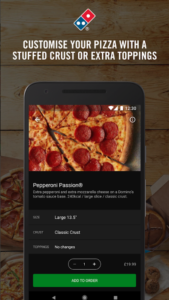Restaurant brands, even the smaller ones, are doin’ it for themselves!
One-sided relationships can only last so long before resentment starts to kick in and the disadvantaged party begins to wise up and explore their options. And we’re seeing this type of fractious relationship between 3rd party delivery platforms like Just Eat, Deliveroo and Uber Eats and the restaurant brands they claim to serve.
The growth of 3rd party delivery providers has outpaced expectations and is estimated to be worth $25bn by 2023. The promise of an additional revenue stream, access to new customers who might not hear about them otherwise and ease of independently fulfilling delivery orders has led to impressive 3rd party delivery adoption. But this delivery solution is not without its disadvantages. On the face of it, delivery providers offer it all, but it comes at a cost. A pretty significant cost as it turns out.
Restaurants are finding themselves forking out 15-30% fees for each order which is a huge expense for any business to absorb, especially for an industry built on tight margins and unforgiving market conditions. And it’s not just the fees that are hard to swallow for operators. Ownership of the customer and their data also belongs to the delivery providers making directly communicating to, marketing to and building up your own customer base, a major challenge. One example of this is SEO. Often, when searching for a brand, the 3rd party delivery website will be listed above the brand’s own website on the search engine results page. As if that wasn’t bad enough, going through a 3rd party can also mean a longer wait for your customers to receive their food. Boston Consulting Group found that four of the most popular delivery services averaged a staggering 49 minutes to deliver an order.
So what’s the solution? On the one hand, customers have an appetite for an order and delivery service but on the other hand, the pros and cons of 3rd party providers for operators just aren’t stacking up in their favor. Large brands such as Dominos, decided early on they were going to do it themselves. They’re now seen as one of the pioneers of in-house delivery, having developed their own app to order, pay and track meals for delivery.

In the past, unless you were one of these large brands you wouldn’t have been able to fund the development and launch of an app. Now, however, branded order ahead apps aren’t just for the rich and famous thanks to mobile ordering solutions available on the market.
These white label apps allow operators to not only move away from expensive 3rd party providers but to take their customers with them. Now, even smaller operators can have best of both worlds. They can keep their branding and offer a solution historically only bigger brands could offer, and they’ll no longer get stung on commission. Take Captain Cod fish and chips for example. They recently launched a branded app to pre-order for collection or delivery. Vicky Webster, Director at Captain Cod, commented: “2020 is such an exciting year for us all at Captain Cod. Our new website and ordering service is going to help us better meet the needs of loyal customers while also letting us reach a wider audience than before.”
Nana Jan’s is another great example of a brand that has chosen to do it themselves rather than go with providers like Deliveroo or Just Eat. With their branded app, they saw a 71% hike in revenue compared to the previous year, while order numbers grew by 45%. Taken together, this data demonstrates the average digital basket size increasing over time. The difference, as noted by Nana Jan’s is that, despite its escalating success, the cost of the online ordering service remains the same. With most aggregator platforms, costs would have increased accordingly.
In summary, if your relationship with 3rd party delivery providers is becoming too hot to handle, remember, you have options. Ditch the crippling commissions and enjoy the freedom of being in control of your digital ordering and delivery success!





